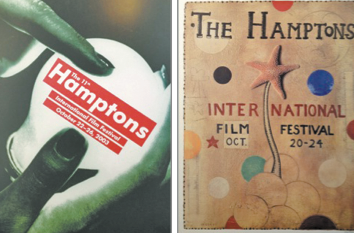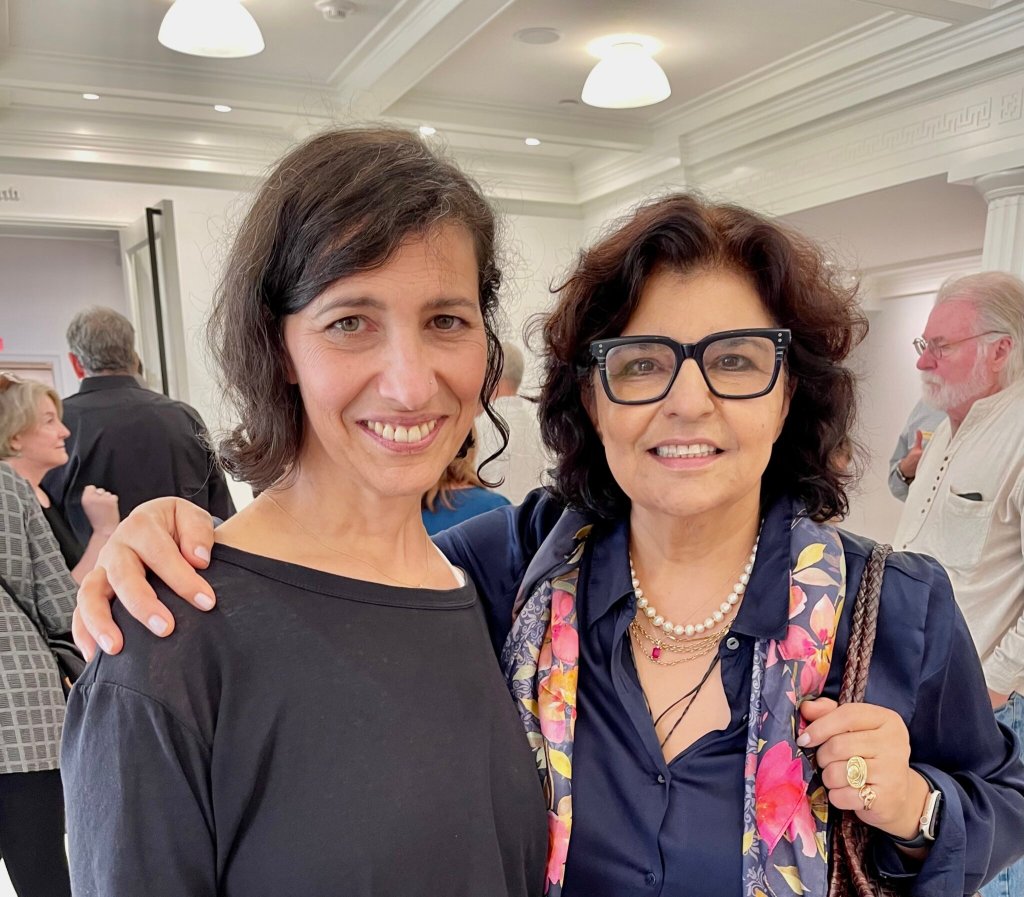Celebrating 20 Years of Film Festival Posters

Poster art is an idiosyncratic form of imagery that has often been underappreciated. But such art is indeed valued and respected in the art market. (This critic can remember buying a silkscreen poster for an early New York Film Festival by Andy Warhol. Cost: $30. It was worth $2,000 about five years ago. Trouble is, the work was used as a target by the critic’s children and is now riddled with dart holes.)
No such circumstances exist at Bridgehampton’s Peter Marcelle Gallery, where an exhibit celebrates 20 years of posters from the Hamptons International Film Festival. Not only are they in pristine condition (naturally) but they also pay tribute to the Festival, the artists who designed them and even cinema art. The result? A straightforward, charming, yet effective show that’s a pleasure to experience. There are a few surprises as well, when considering that some artists apply signature themes and styles to their poster design.
SEE THE FULL MOVIE SCHEDULE FOR HIFF HERE
One such artist is Eric Fischl, who has designed three Festival posters through the years. One was in 1993, and it captures the essence of cinema while also conveying Fischl’s connection to the movies. Four separate images feature a woman in the process of dressing/undressing; the effect recalls a cinematic montage. The artist’s use of time is indicated here as well, with an ambiguity existing between what is the beginning and what is the end. Fischl’s other posters (1992, 2002) also suggest his figures’ lack of communication, their faces turned away from each other as well as from the viewer.
Ross Bleckner’s poster (2004) similarly mirrors a signature motif: abstract circles enclosed in a rectangular form. While such a design designates the spread of AIDS in a series from the past, it is still potent and strangely beautiful when associated with the Festival poster. April Gornik’s two works represent her iconic motifs, too, with a skyscape (1995) and a water scene (2005). The last poster shows dainty white drops of light scattered throughout the water, perhaps a metaphor for footprints and the legacy left behind by the Festival.
Other posters are less subtle in suggesting their rtists’ motifs, but no less effective: Bryan Hunt’s piece (2009) with a curvy sculptured shape, surrounded by negative space; and Donald Baechler’s small portraits of heads (1997). David Salle’s poster (1994) features objects that signify aspects of popular culture.
Stylistic tendencies are also evident in Jim Gingerich’s work (2000), thick brush strokes pervade the canvas as a man runs down a country lane, a sly indication that the natural environment is fading.
Finally, Billy Sullivan’s portrait (2007) of a man possesses the artist’s recognizable and quirky use of line.
Yet other posters pay homage to the Festival itself, like Dan Rizzie’s beach scene, complete with sand, starfish, and his whimsical flower. This year’s poster (2012) by Cecily Brown is a full-blown abstraction that may also relate to the Festival, with the artist’s familiar dense shapes and diverse colors piled on top of each other. Could this be a metaphor indicating the varied and intense movies waiting for us at the upcoming Festival? We hope so.
The poster exhibit of 20 years of the Hamptons International Film Festival will be on view until Oct. 8, 2012 at Bridgehampton’s Peter Marcelle Gallery (2411 Main Street). Call 631-613-6170 for information.





